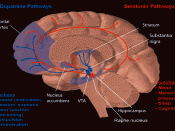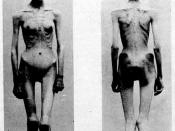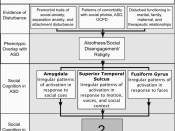"I glance in the three-way mirror. I can see my back, my ribs and spine all looking back at me. My butt sagging. I look close to the mirror, my skin translucent. There are purple circles around my eyes. I've lost more than half my hair. What's happened" (Giordano 149)? This is the thought of an eighty-nine pound teenage girl who stares at her food and just picks it apart. The same case scenario is commonly seen throughout young girls across the nation. This leaves me with a question. What could have such a tremendous effect on these young females? Well, the answer is the media. The media portrays dangerously thin girls as having the ideal body type. It is my suggestion to the media that they should use the "average woman" in images that they portray as beautiful.
Currently, Anorexia Nervosa is difficult to identify and to treat. Often the most difficult part is for people to admit that they have this disease.
Knowingly, "Anorexia has been recognized as a condition for hundreds of years" (Jourdan 1). During the ten-year span, 1970 to 1980, the number of people diagnosed increased times three (Jourdan 1). Obviously, "the main symptom is noticeable weight loss caused by excessive dieting. Some people also take laxatives or make themselves vomit. Excessive exercising is another feature. People with anorexia typically weigh 15 percent or more below the expected weight for their age, sex and height" (Jourdan 1). Although, "researchers say they become anorexic because of a complex interaction between biological, psychological and social factors" (Jourdan 1). Young girls that are diagnosed with this disease often have a very low self-esteem. Some girls may have become anorexia because they had an unpleasant childhood. For this reason, it is proven that "researchers found...


